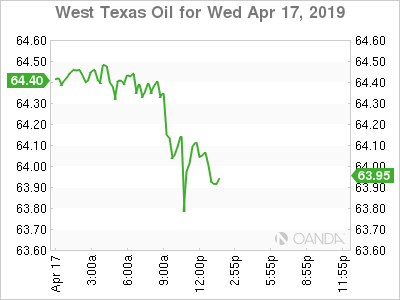Oil rose after the Energy Information Administration (EIA) posted its weekly crude inventories report showing a 1.4-million-barrel drawdown with gasoline and distillates also showing reductions.
Supply concerns persists with US sanctions against Iran and Venezuela and the civil war in Libya, but the OPEC+ agreement has been the bigger factor. The deal to limit production has stabilized prices working against rising US production.
Energy demand was given a positive signal as China grew 6.4 percent in the first quarter of 2019.
Oil prices also got a boost from the fact that the dollar remains on the back foot as safe-haven flows have dropped the currency looking for riskier assets.
The biggest obstacle for higher prices are the same factors that got them here in the first place. US sanctions against Iran and Venezuela could get tighter, but it could trigger an end to the OPEC+ deal. Russia and other major producers have hinted that they could ramp up production.
US shale expectations point to more supply, so a repeat of 2014 could present itself if Saudi Arabia does not manage to convince major producers to keep the production cuts active.


